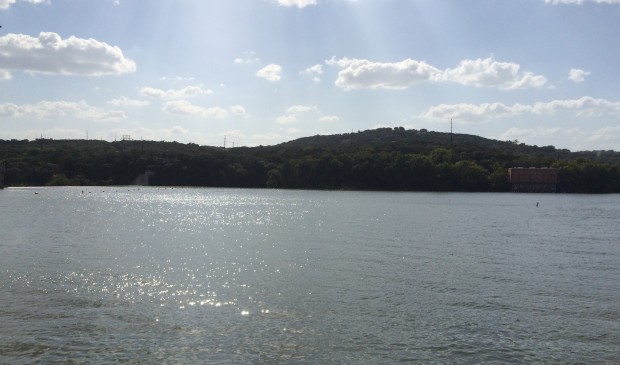Newsletter Signup
The Austin Monitor thanks its sponsors. Become one.
Most Popular Stories
- Austin opens new affordable housing development in Southeast Austin
- Landmark commission says goodbye to Nau’s Enfield Drug
- After a decline last year, Travis County homeowners should expect a return to rising property taxes
- ZAP Commission forwards recommendation allowing some commercial uses in residential zones
- Ryan Alter and colleagues propose revision of boards and commissions
-
Discover News By District

Council discusses water scarcity
Tuesday, February 10, 2015 by Tyler Whitson
With the current central Texas drought showing no signs of abating, City Council sat down with staff and water experts on Monday to discuss the severity of the issue.
Sharlene Leurig, who chaired the Austin Water Resource Planning Task Force, told Council at the policy workshop that the conversation about water scarcity is coming at “exactly the right time.”
“It’s a critical priority for a city like Austin that is rapidly growing and that relies on a single source of water,” Leurig said, referring to the Colorado River and its reservoir lakes, Travis and Buchanan.
The task force, which Council created in April, published a report in July that recommended the city develop and implement an Integrated Water Resource Plan. Council adopted a resolution in December that created a new task force to help develop the IWRP and directed City Manager Marc Ott to hire a consultant to support the process.
According to Mayor Pro Tem Kathie Tovo, who sponsored the resolution, Council plans to discuss potential appointees to the IWRP task force at today’s work session. A list of recommended members is available at the City of Austin Council Message Board.
Austin Water Utility Director Greg Meszaros seemed confident that city staff will act quickly, once the plan is adopted. “By the end of the year, I think you’ll be seeing transactions related to our Integrated Water Resource Plan coming to Council,” he said.
Meszaros also noted that the city may have to take emergency conservation measures in the meantime. “Depending on where lake levels go, if they fall below that 600,000 acre-foot line — 30 percent — we may need to implement Stage 3 and Stage 4 water restrictions, along with associated rate surcharges,” he said.
An acre-foot is equal to approximately 326,000 gallons.
Meszaros said that the combined storage of Lakes Travis and Buchanan is currently about 35 percent, or a little over 700,000 acre-feet. The city has been in Stage 2 of the Drought Contingency Plan since 2012, and the five all-time lowest inflow years to the lakes since they were built in the first half of the century have occurred since 2006.
LCRA Executive Vice President of Water John Hoffman said there is a chance the lakes could fall below the 600,000 acre-feet line this year, but it is unlikely. “Right now, the earliest that we could see 600,000 acre-feet is in the May to June time frame,” he said. “That’s less than a 1 percent probability, so some time thereafter.”
The Stage 2 restrictions, along with voluntary conservation measures, have led to significant drops in water usage. For example, in fiscal year 2014, all customers combined used a total of about 125 gallons per capita per day, while residential users consumed about 70. In 2006, the numbers were, respectively, 190 and 103.
Regardless of these measures, the LCRA has asked the Texas Commission on Environmental Quality for permission to limit downstream releases for the fourth consecutive year due to the severity of the drought. This has a major effect on what the TCEQ calls “interruptible” customers — mainly agricultural interests — in the lower Colorado River basin.
“It is as devastating downriver as it is up around our reservoirs to the livelihoods and businesses that depend on the Colorado River basin,” Hoffman said. “There are lives and livelihoods that have been changed in a way that, frankly, will never be the same.”
Hoffman said that the LCRA had a groundbreaking ceremony for the Lane City Reservoir Project in the lower Colorado River basin in December. “We hope to have initiated the actual construction later this month or the early part of next month, perhaps,” he said.
“The net effect of that reservoir will be that we’ll be able to locally source water for some of our demands in the lower basin and prolong our supplies in the Highland Lakes by not having to release water out of our reservoirs up here,” Hoffman continued. He mentioned the Halloween 2013 flood as an example of an event that may have contributed to such a reservoir.
The Highland Lakes is a system of lakes along the Colorado River that includes Travis and Buchanan.
In addition to discussing the current water supply situation, speakers suggested strategies for improving it in the future.
Leurig suggested the city consider pursuing innovative methods for further reducing water consumption, as well as stormwater catchment systems and other alternatives to importing water.
Local water rights attorney Paul Terrill said he is concerned that “the city has put all of its water supply eggs in one basket, and that’s the Colorado River.” Among other recommendations, Terrill suggested that the city consider importing water.
You're a community leader
And we’re honored you look to us for serious, in-depth news. You know a strong community needs local and dedicated watchdog reporting. We’re here for you and that won’t change. Now will you take the powerful next step and support our nonprofit news organization?








